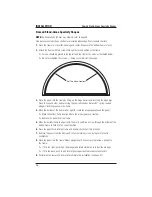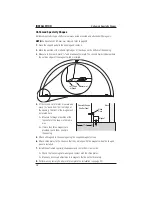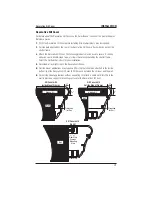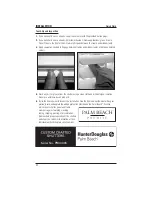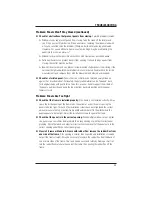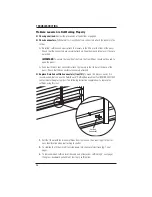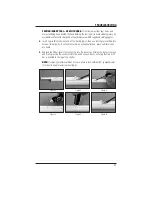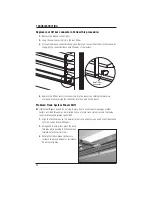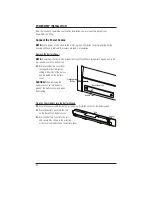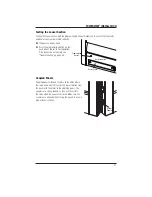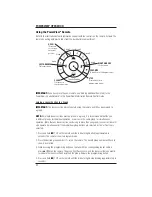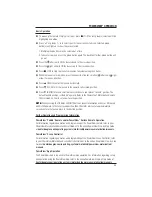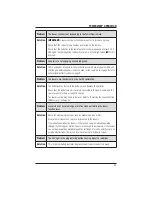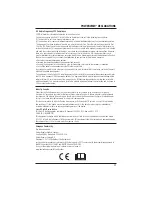
TROUBLESHOOTING
45
Problem: Panels Won’t Stay Closed (continued)
■
Check for obstructions that prevent panels from closing.
Possible problems include:
➤
Window cranks can prevent panels from closing. Take the crank off the rotator and
see if the panel is still obstructed. If the panel closes, replacing the window crank with
a T-crank can often solve the problem. Otherwise, build-out may be required to add
clearance. For panels without a frame, an extension hinge may be used to bring the
panel into the room an extra
5
/
8
".
➤
Window locks are other possible obstructions. Add clearance as described above.
➤
Patio door handles can prevent louvers from opening. If a handle stops a panel from
closing, the shutter must be built out.
➤
Bowed sills or casements can prevent inside-mounted shutter panels from closing if the
narrowest height and width measurements were not ordered. Double-check the inside
measurements and compare them with the measurements ordered and received.
■
Check for a twisted panel.
Panel stiles can sometimes be twisted by weight leaned
against it or by extreme heat. Fortunately, the polysatin material can be “tweaked” back
to its original shape with gentle force. To do this, use your hand to support the middle of
the panel’s outside stile and bend the top or bottom back into position until the panel
remains closed.
Problem: Panels Are Too Tight
■
Check that the frame is installed properly.
If the frame is not installed correctly, it may
cause the inside opening of the frame to be too narrow at a specific point, causing the
panels to be too tight. To check if the installation screws have been tightened the correct
amount, measure the top or bottom frame width and compare it to the width where the
panel appears to be too tight. Adjust the installation screws to square the frame.
■
Check that the panel is in the correct opening.
When multiple windows are of similar
size, panels can sometimes be placed into the wrong opening or with the incorrect panel
grouping. Check the labels and order form instructions to ensure that the panels are in the
correct opening and with the correct panel group.
■
Classic Z-Frame or Modern Z-Frame with rubber flex: remove the rubber flex from
one side of the frame.
If the opening is smaller than expected and installation screws do
not pull the frame straight, it may be necessary to remove the rubber flex from the back of
one or more sides of the frame. This can be done easily and safely by making a small cut
into the rubber flex material at one end of the frame, then peeling the rubber flex off the
frame.






